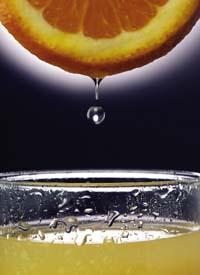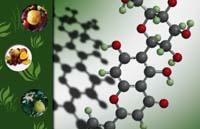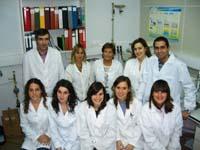2008/01/01
238. zenbakia

eu es fr en cat gl
Aparecerá un contenido traducido automáticamente. ¿Deseas continuar?
Un contenu traduit automatiquement apparaîtra. Voulez-vous continuer?
An automatically translated content item will be displayed. Do you want to continue?
Apareixerà un contingut traduït automàticament. Vols continuar?
Aparecerá un contido traducido automaticamente. ¿Desexas continuar?
Fingerprint for fruit juices
Text created by automatic translator Elia and has not been subsequently revised by translators.
Elia Elhuyar
Forgery or food fraud are becoming an economic problem affecting many foods. That is why it is very important to ensure that food is 'authentic'. With fruit juices, for example, the original juice is often mixed with the juice of a cheaper fruit, such as grapefruit, grape or pear juice. That is, they fail the juice.
Fingerprint for fruit juices
01/01/2008 | Kortabitarte Egiguren, Irati | Elhuyar Zientzia Komunikazioa

(Photo: From archive)
Among the chemical methods to ensure the absence of fraud in fruit juices are two strategies. On the one hand, the use of specific and exclusive chemical markers or compounds of each fruit. These markers must be measurable and analysable quickly, safely and economically. However, in many cases it is impossible to find markers that meet all these requirements, so they use other chemical methods to ensure that no product fraud has been committed. They measure and study various chemical compounds that are part of the proper profile of each fruit or fruit juice. The fingerprint of each fruit. For this complex work they use analytical techniques and sophisticated statistical tools.
Polyphenolic compounds
In order to ensure that fruit juices are not adulterated, the researchers of the Analytical Chemistry department of the UPV/EHU are working on identifying the fingerprints of juices by analyzing the polyphenolic chemical compounds present in all fruits. There are thousands of polyphenols in plant kingdom species and in each species different polyphenols appear, even in different quantities. Consequently, each fruit has a specific polyphenolic profile.
To analyze the polyphenolic profile of each fruit, UPV researchers use the technique called high resolution liquid chromatography (HPLC). This technique allows to know what polyphenol and how much they are in each fruit. In this way, they can know the difference between the different fruits in the polyphenolic profile.
However, to increase the safety of polyphenolic profiles, it is necessary to confirm the identity of all polyphenols that appear in these profiles. For this purpose they use another analytical technique, mass spectroscopy (MS).
Orange, mandarin, lemon...

Each fruit has a specific polyphenolic profile.
UPV/EHU
We analyzed the varieties of 16 fruits (orange, mandarin, lemon, grapefruit...) that grow in Spain --77 total varieties. In this way, they have known what are the common characteristics that appear in the fingerprints of all the fruits, as well as the characteristics that differentiate one from another.
The researcher Beatriz Abad, in her doctoral thesis, has found a quite exclusive marker for lemon and three markers for grapefruit. In addition, it has found that the use of more than one marker instead of a marker allows to detect food fraud more safely. He has also observed some basic differences between several finger marks and, with the help of some statistical tools, has found that these differences provide a fairly reliable degree of safety.
For example, you can say if the orange juice has been mixed with the grapefruit or not quite simply and safely; if the lemon has been mixed or not. However, the detection of mandarin in in orange juice is a more laborious and less reliable work. And it is that the fingerprints of mandarin and orange have many similarities.
So far, polyphenolic profiles of unadulterated fruit juices or polyphenolic finger marks have been defined. In the future they want to apply these fingerprints to juices in the market to detect possible falsehoods or frauds. The UPV researchers have already begun this work.
Summary of the project
The aim of the project is to find markers between polyphenols that ensure that fruit juices are 'real'. For this purpose, they analyze the polyphenolic profiles of the fruits or the fingerprints.
Director of the Director
Luis Angel Berrueta.
Working Team
O.T. Berrueta, B. Gallo, F. Vincent, B. Abbot, S. Garmón, D.M. López, M. B. B. Sánchez, M. Romera, C. Sánchez and M. Viloria.
Department of Commerce
Analytical Chemistry.
Faculty of Faculty of Medicine
Science and Technology.
Financing Financing Finance
UPV/EHU.

Above, Luis Angel Berrueta, Blanca Gallo, Francisca Vicente, Beatriz Abad and Sergio Garmón. Below, Mª Belén Sánchez, Cristina Sánchez, María Viloria, Miriam Romera and Diana Mª López.
(Photo: UPV)
Kortabitarte Egiguren, Irati
Services Services Services
238 238
2008 2008 2008 2008 2008
1.
039 039 039 039
Chemistry; Universities
Dissemination of knowledge
Others








